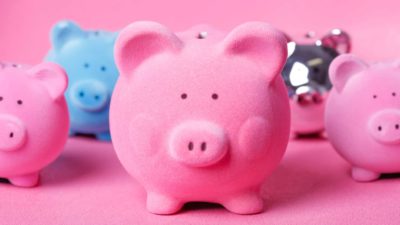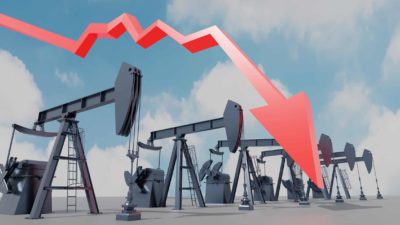It's easy to be bearish on the stock market right now.
1) Interest rates are rising, with the Reserve Bank of Australia (RBA) widely expected to hike again today, likely by another 50 basis points, lifting the cash rate to 2.35%.
2) Inflation is running at a 32-year high, at an annual rate of 6.1%. In the United States, the annual inflation rate is 8.5%, and in the United Kingdom, it's over 10%, with some experts saying it could reach 15% there by the start of 2023.
The picture is much worse on Wall Street, with the S&P 500 and NASDAQ indices down 18% and 27% respectively so far this year, and effectively in bear market territory, the first prolonged such event since the global financial crisis.
3) The S&P/ASX 200 Index (ASX: XJO) is down 8% since the start of the year, having been off as much as almost 14% in June.
4) According to Bloomberg, Australian consumer sentiment has declined every month since November for a cumulative drop of almost 23%, bringing it to levels reached during the COVID pandemic and 2008-09 global financial crisis.
Not much to look forward to, hey?
Admittedly, things feel bleak, although for me, that's probably more to do with my profession – a stock market investor and commentator – than reality. In our business, fear sells like nothing else, including article headlines, like the one you clicked on to read this.
Reality is, I don't know where the share market goes from here.
It could go higher if there are signs of inflation being tamed. Or it could grind lower if it becomes apparent interest rates will have to rise higher than current expectations.
Speaking of which, according to the Australian Financial Review (AFR), Commonwealth Bank forecasts the RBA will pause tightening for "at least a few months" when the cash rate hits 2.6% or 2.85%. In contrast, the bond market implies a terminal cash rate of 3.8% by mid-next year.
Recession and prolonged bear market
It's an incredibly wide discrepancy and the likely difference between a softer landing and a recovering share market and a recession and a prolonged bear market.
Of the two scenarios, with my glass half-full, cap on, my money would be on the RBA cash rate not hitting 3.8% by the middle of next year.
At that level, mortgage holders and the housing market would be smashed. The Commonwealth Bank's standard variable mortgage rate already stands at an eye-watering 6.3% – something that would likely plunge the Australian economy into recession and send the ASX 200 into a vicious bear market.
The most successful investors don't let economic forecasts – good or bad – impact their investing decisions. It's because they are generally unreliable.
Sure, it's easy to say now interest rates will go higher. But it was only in October last year that the RBA was saying interest rates would not rise until 2024, and that was when the cash rate was just 0.1%.
Sure, it's easy to say now the share market will go lower, given the somewhat dire economic outlook. But how does that account for the 6% gain in the ASX 200 index since mid-June this year, and the almost doubling of the Life360 Inc (ASX:360) share price and the almost 60% gain in the WiseTech Global Ltd (ASX: WTC) share price in the same period?
As I said at the top, it's easy to be bearish on the stock market right now.
If you are tempted to cash out now, I'd question why you are even invested in the stock market. Volatility comes with the turf, and is the very reason why the stock market offers above-average returns.
But such returns – between 8% and 12% per annum, on average – only accrue to patient, long-term investors. Managing your emotions is often your biggest investing challenge.
In the meantime, my best advice for right now, as it is at any time in the cycle, is to methodically and consistently just keep adding money to the market. Your future wealth will thank you.








